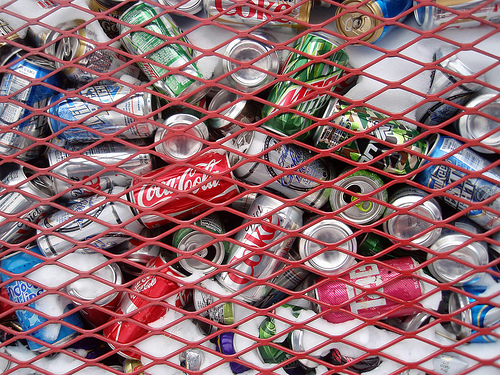Out of all the metals you can recycle, aluminum is one of the most energy-efficient and cost-saving. It can take 9 to 18 as much energy to produce aluminum from raw ore than melting down and purifying used and recycled aluminum.

However, some of the impurities are hard to remove. The paint on your soda can or other metal alloys contaminate the pure aluminum, making it unsuitable for computer parts or other uses that require high purity. Instead, the less-pure aluminum is often ‘down-cycled,’ or repurposed for a product that can handle more impurities.
As you can probably imagine, even such down-cycling will reach an endpoint as more impurities accumulate.
“There is a huge range of impurity tolerance,” said Elsa Olivetti, from the Massachusetts Institute of Technology, in a press release. “The question is, how will the balance of such markets over time compare with the kinds of materials coming through the recycling stream?”
Last week, Olivetti and her colleagues published a review paper detailing the different aluminum purification technologies to inform people managing recycling plants about the best systems to implement. “Technology for dealing with garbage is not an exciting, high-profile field, but there is real value in investing in this,” said co-author Randolph Kirchain.
The first step in recycling is physical separation of different metals using a wide range of methods, including magnetism, electric current, density, and color. Then, once the pile of mostly-aluminum is melted down, the impurity removal process begins by adding different salts and gases to the mixture, which cause the impurities to form identifiable and removable solids. One of the best methods is the Hoopes method, wherein an electrical current is run through the melt, dragging impurities to the edges. However, it’s very energy intensive (and thus expensive).
A growing area of continuing research and development involves controlled heating and cooling of the melted aluminum to form crystals. These crystals settle out, leaving impurities in the liquid above. The resulting crystals are quite pure and are currently used to make “memory disks, capacitor foil, and other electronic applications,” the authors wrote in the paper.
The authors don’t take a stance on which technology is best, but the “team’s analysis showed that it would indeed make sense to install such systems in anticipation of future changes,” the press release says.
